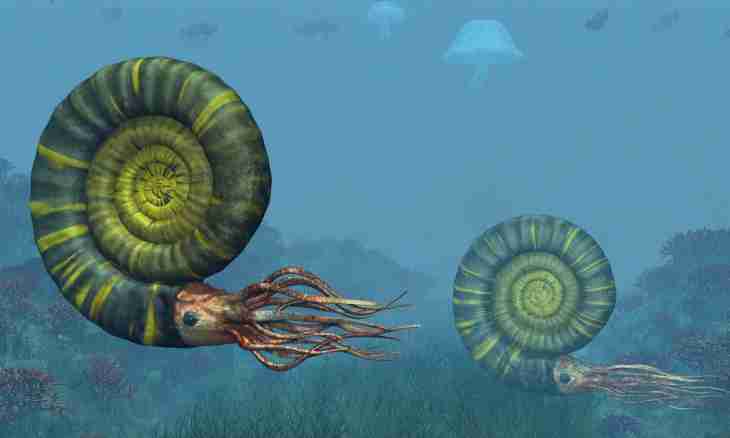On the planet there is a huge number of high-organized beings who live not only on the land, but also in the thickness of water. One of such representatives are mollusks.
General characteristic
The class of cephalopod mollusks, or Cephalopoda, has also the name Gastropoda. It contains about 700 types which live in reservoirs or at their bottom. The class is divided into two subclasses. The died-out ammonites and nautiluses which represent four-branchiate concern the first. Cuttlefishes, squids and octopuses treat the second. These representatives represent a subclass of two-branchiate.
As a rule, the body of mollusks differs in bilateral symmetry. In this regard allocate the head and a trunk. The sink is present only at ancient forms, and at other representatives it is rudimentary. From above all body of a mollusk is covered with a cloak which consists of one layer of an epithelium and connecting fabric. Some types can have chromatophores thanks to which the body can change the coloring.
Digestive system
Digestive system of cephalopods has rather complex structure. But special attention the throat which is supplied with horn jaws in the form of a beak deserves. In addition, salivary secrets which are allocated in a throat cavity are rather poisonous. Thanks to them, the mollusk immobilizes the victim. The stomach represents a bag which smoothly passes into a back gut. There is an ink bag in which ink is produced, thanks to them the mollusk has an opportunity to hide at emergence of danger. Digestive system comes to an end with an anus.
Secretory and blood systems
The secretory system includes two or four kidneys. As a rule, their quantity depends on the representative. The blood system is presented by heart with one ventricle and two auricles. At two-branchiate representatives of auricles two, and at four-branchiate - four.
Sense organs
Sense organs are presented by osfadiya and eye bags. Two-branchiate representatives instead of osfadiyev have olfactory poles, and as an organ of vision - difficult eyes which remind the structure of eyes at mammals.
Genitals and skeleton
All cephalopods are diclinous organisms. Fertilization at them spermatoforny, that is spermatofor act as gametes. Development of posterity happens in egg which before hatching is in a mantle cavity of a female. The skeleton of the majority of cephalopods is presented by a cartilaginous skull.
Nervous system
Their complex nervous system is considered feature of mollusks. It is presented by a brain. In this regard animals give in to training, have very good memory and even distinguish geometrical figures.

